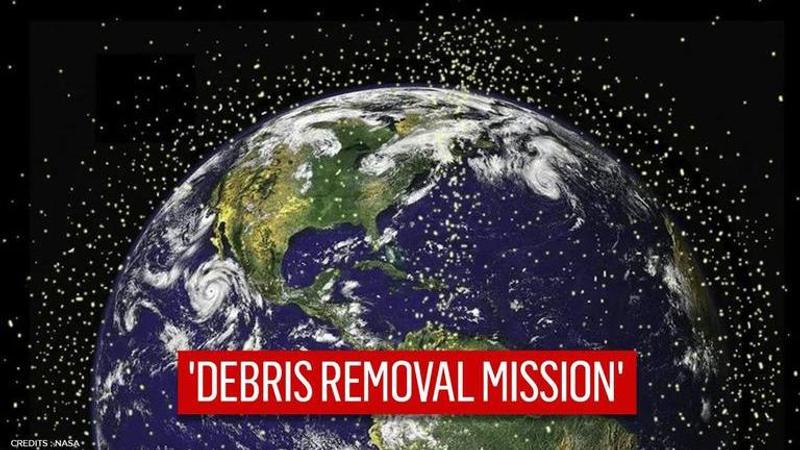Published 20:00 IST, November 30th 2020
European Space Agency to send giant ‘claw’ into orbit to clean up space clutter
To clear out the space clutter, the ESA has come up with a plan: A space claw, which will grip defunct satellites and steer them back into Earth's atmosphere.

There are around 2,800 live satellites currently orbiting the Earth and space clutter is believed to be a hindrance in effective space exploration. Scientists have estimated that almost 3,000 dead satellites are currently circling the globe, in addition to 900,000 pieces of debris, that could potentially cause a catastrophe if it hit the wrong satellite at the wrong time. Now, in a bid to clear out the space clutter, the European Space Agency (ESA) has come up with a bizarre plan: A space claw.
According to the Associated Press, the ESA is signing a $102 million contract with a Swiss start-up company to bring a large piece of orbital trash back to Earth. The agency said that the deal with ClearSpace SA will lead to the “first active debris removal mission” in 2025. Further, the agency revealed that a space claw will help them clean the space clutter by gripping larger defunct satellites and steering them back into the earth’s atmosphere where both the satellite and the claw itself can burn up in peace.
According to CNET, the plan was initially conceived back in 2019, however, now the ESA has decided to sign a contract with the Swiss firm to build and launch its debris removal mission. The Claw’s first target is a VESPA (Vega Secondary Payload Adapter) that has been orbiting the globe since it helped launch an ESA Vega rocket back in 2013. The agency informed that the VESPA weighs 112 kgs and is close in size to a small satellite.
In a press release, ESA said, “ClearSpace-1 will demonstrate the technical ability and commercial capacity to significantly enhance the long-term sustainability of spaceflight. The mission is supported within ESA’s Space Safety Programme based at the agency’s ESOC operations centre in Darmstadt, Germany”.
UK invests £1M to tackle space debris
Meanwhile, as scientists have long warned that hundreds of thousands of pieces of space debris pose a threat to functioning satellites, the UK, back in September, had also announced an investment of GBP one million to tacked the dangers presented by the clutter. The UK government along with the country’s space agency and Ministry of Defence (MoD) signed the formal agreement, saying that it contributes to Britain’s opportunity to benefit from mega-constellations of satellites. Additionally, the space agency and MoD have also signed an agreement to work together on monitoring hazards in orbit.
The officials will also be tracking so-called ‘space junk’ which could pose a threat to the International Space Station (ISS) and its crew. They have estimated that there are approximately 160 million objects in orbit, which daily consists of debris - which could collide with satellites. The UK government informed that only a fraction of this debris can currently be tracked and avoided by working satellites. They further added that it has a significant opportunity to benefit from the new age of satellite mega-constellations, which is a vast network made up of hundreds or even thousands of spacecraft.
Updated 19:59 IST, November 30th 2020



